
Ṣubḥ-i-Azal (Morning of Eternity) was a Persian religious leader of Azali Bábism also known as the Bayání Faith. He held the fourth place in the Babi hierarchy.
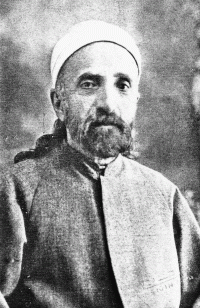
Mírzá Muhammad ʻAlí was one of the sons of Baháʼu'lláh, the founder of the Baháʼí Faith. He was the eldest son of his father's second wife, Fatimih Khanum, later known as Mahd-i-'Ulya, whom Baháʼu'lláh married in Tehran in 1849. Muhammad ʻAlí received the title from his father of G͟husn-i-Akbar.
Baháʼu'lláh was the founder of the Baháʼí Faith. He was born in 1817 to Khadíjih Khánum and Mírzá Buzurg of Nur, a Persian nobleman, and went on to be a leader in the Bábí movement, and then established the Baháʼí Faith in 1863. Baháʼu'lláh's family consists of his three wives and the children of those wives.
The following is a basic timeline of the Bábí and Baháʼí religions emphasizing dates that are relatively well known. For a more comprehensive chronology of the timeline, see the references at the bottom.

Mullá Husayn (1813–1849), also known by the honorific Jináb-i Bábu'l-Báb, was a Persian religious figure in 19th century Persia and the first Letter of the Living of the Bábí religion. He was the first person to profess belief in the Báb as the promised Mahdi of Islam and a Manifestation of God, founding a new independent religion. The title of Bábu'l-Báb was bestowed upon him by the Báb in recognition of his status as the first Bábí.
Baháʼí history is often traced through a sequence of leaders, beginning with the Báb's declaration in Shiraz on the evening of May 22, 1844, and ultimately resting on an Administrative Order established by the central figures of the religion. The religion had its background in two earlier movements in the nineteenth century, Shaykhism and Bábism. Shaykhism centred on theosophical doctrines and many Shaykhis expected the return of the hidden Twelfth Imam. Many Shaykhis joined the messianic Bábí movement in the 1840s where the Báb proclaimed himself to be the return of the hidden Imam. As the Bábí movement spread in Iran, violence broke out between the ruling Shiʻa Muslim government and the Bábís, and ebbed when government troops massacred them, and executed the Báb in 1850.
Mullá Muḥammad-i-Zarandí, more commonly known as Nabíl-i-Aʻẓam or Nabíl-i-Zarandí, was an eminent Baháʼí historian during the time of Baháʼu'lláh, and one of the nineteen Apostles of Baháʼu'lláh. He is most famous for authoring The Dawn-Breakers, which stands out as one of the most important and extensive accounts of the ministry of the Báb.
The Apostles of Baháʼu'lláh were nineteen prominent early followers of Baháʼu'lláh, the founder of the Baháʼí Faith. The apostles were designated as such by Shoghi Effendi, head of the religion in the earlier half of the 20th century, and the list was included in The Baháʼí World, Vol. III (pp. 80–81).

Mírzá Muḥammad, or Mírzá Abu'l-Faḍl-i-Gulpáygání (1844–1914), was the foremost Baháʼí scholar who helped spread the Baháʼí Faith in Egypt, Turkmenistan, and the United States. He is one of the few Apostles of Baháʼu'lláh who never actually met Baháʼu'lláh. His given name was Muhammad, and he chose the alias Abu'l-Faḍl for himself, but ʻAbdu'l-Bahá frequently addressed him as Abu'l-Fada'il.
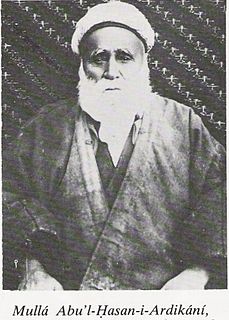
Mullá Abu'l-Hasan-i-Ardikání, better known as Hájí Amín, was an eminent follower of Baháʼu'lláh, founder of the Baháʼí Faith. Amín served as the trustee of Huqúqu'lláh, was posthumously appointed a Hand of the Cause of God by Shoghi Effendi, and identified as one of the nineteen Apostles of Baháʼu'lláh.

Afnán-i-Yazdí, also known as Ḥájí Mírzá Muḥammad-Taqí, was an eminent follower of Baháʼu'lláh, the founder of the Baháʼí Faith. He is identified as one of the nineteen Apostles of Baháʼu'lláh.
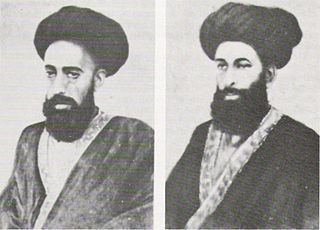
Núrayn-i-Nayyirayn are two brothers who were followers of Baháʼu'lláh, the founder of the Baháʼí Faith, a global religion of Persian origin. They were beheaded in 1879 as a result of being Baháʼís. Numerous letters and tablets were written in their honour by Baháʼu'lláh, who gave them the titles which they are commonly known as: the King of Martyrs and the Beloved of Martyrs.

Ḥají Mullá ʻAlí-Akbar S͟hahmírzádí, known as Ḥají Ák͟húnd, was an eminent follower of Baháʼu'lláh, the founder of the Baháʼí Faith. He was appointed a Hand of the Cause, and identified as one of the nineteen Apostles of Baháʼu'lláh.

Ḥájí Mírzá Muḥammad-Taqí, known as Ibn-i-Abhar, was an eminent follower of Baháʼu'lláh, the founder of the Baháʼí Faith. He was appointed a Hand of the Cause and identified as one of the nineteen Apostles of Baháʼu'lláh.

Hájí Mírzá Ḥasan-i-Adíbu'l-ʻUlamá, known as Mírzá Ḥasan or Adíb, was an eminent follower of Baháʼu'lláh, the founder of the Baháʼí Faith He was appointed a Hand of the Cause and identified as one of the nineteen Apostles of Baháʼu'lláh.
Opponents of the Baháʼí Faith have accused the faith's followers of committing various acts of political mischief, such as having a supposed "dual loyalty" and being secretly in the employ of foreign powers supposedly inimical to the interest of their home state. These accusations, together with others with a more theological bent, have been used to justify persecution of adherents of the Baháʼí Faith and the religion itself.
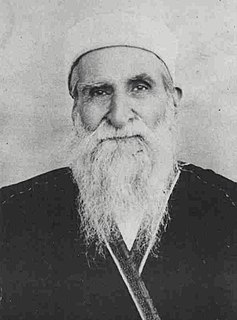
Mullá Zaynul-ʻÁbidín was a prominent Iranian Baháʼí who served as a secretary to Baháʼu'lláh, was listed by Shoghi Effendi as one of nineteen Apostles of Baháʼu'lláh, and biographied by ʻAbdu'l-Bahá in Memorials of the Faithful. With a background as an Islamic jurist, he posed the clarifying legal questions to Baháʼu'lláh about the Kitáb-i-Aqdas that became the supplement "Questions and Answers" now published along with the original text. His arrangement of the Hidden Words, another major work of Baháʼu'lláh, became the numbered order that is now currently used by Baháʼís.
Mírzá Muhammad Mustafá was born in Baghdád, Iraq around 1837. During the period that Baháʼu'lláh was in Baghdád, Mírzá Mustafá became devoted to Him prior to His Proclamation. In 1874 Mírzá Mustafá traveled to Akká at which point Baháʼu'lláh instructed him to move to Beirut and provide service for those Baháʼís traveling to Akká. After the passing of Baháʼu'lláh (1892), he moved to Alexandretta (Iskandarun) where he died in 1910. His father was Shaykh Muhammad Shible. He was a distinguished follower of the Shaykhí leader Siyyid Kázim-i-Rashtí and his personal representative in Baghdád. He was taught the Bábí faith by Mullá Alí-i-Bastámí when he was brought to Baghdád and imprisoned. Later he hosted Táhirih another Letter of the Living. when she came to teach. When she was expelled from Baghdád, Shaykh Muhammad Shible and his son Mírzá Muhammad Mustafá left with her to Qazvín and Tihrán Írán where they met Mullá Husayn-i-Bushrú'í the first Letter.
Shaykh Muhammad Alíy-i-Qá'iní was the nephew of Nabíl-i-Akbar, another apostle of Baháʼu'lláh. As a young man engaged in religious studies in Mashhad, he encountered the Baháʼí Faith and soon became an ardent believer. He became a close companion of his uncle Nabíl until the latter's death in 1892. In 1903, Shaykh Muhammad Alí was instructed to accompany Mírzá Hasan-i-Adíb to India, but on the he was caught up in the persecution against the Baháʼís in Isfahán. He was stripped of his clothes, severely beaten and fortunate to escape with his life. He had to return to Tihrán, but later reached India and stayed there for a year and a half. He then traveled to Haifa. There ʻAbdu'l-Bahá sent him to Ishqábád to take care of the education of children there. Apart from journeys he made for the service of the faith, he stayed in Ishqábád for the rest of his life. After the death of Mírzá Abu'l-Faḍl, Shaykh Muhammad Alí was called to Haifa to complete, with the help of others, the unfinished writings of Mírzá Abu'l-Faḍl, leaving for Ishqábád shortly before ʻAbdu'l-Bahá's death. Shaykh Muhammad Alí died in 1924 after a prolonged illness.
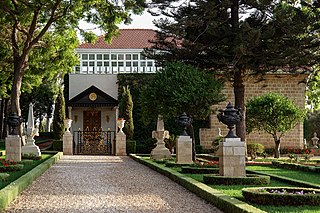
Baháʼu'lláh was a Persian religious leader, and the founder of the Baháʼí Faith, which advocates universal peace and unity among all races, nations, and religions.














